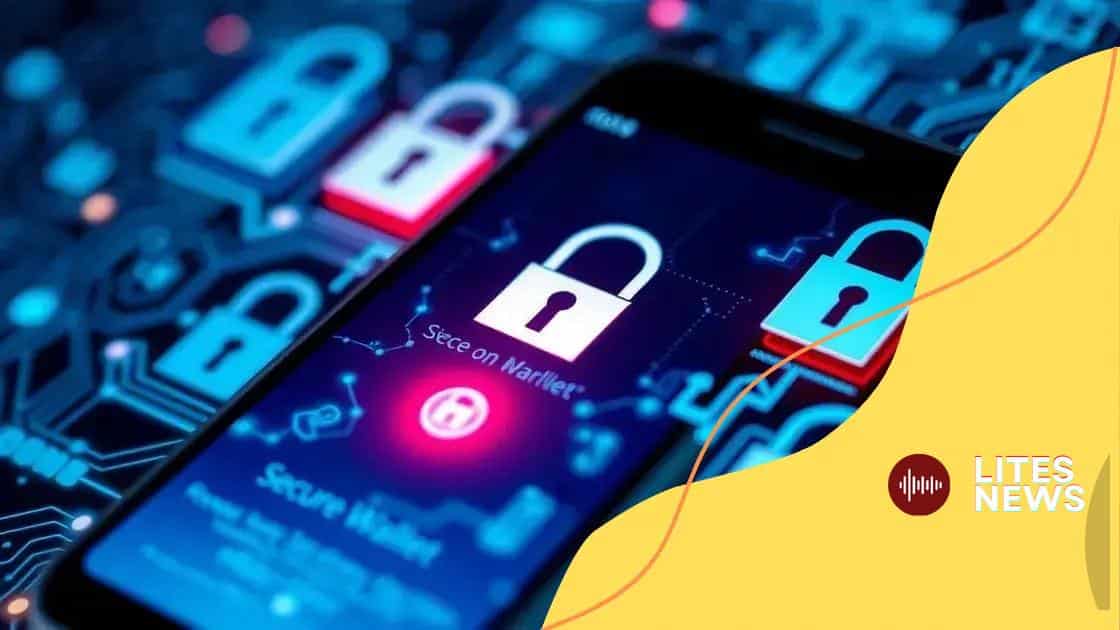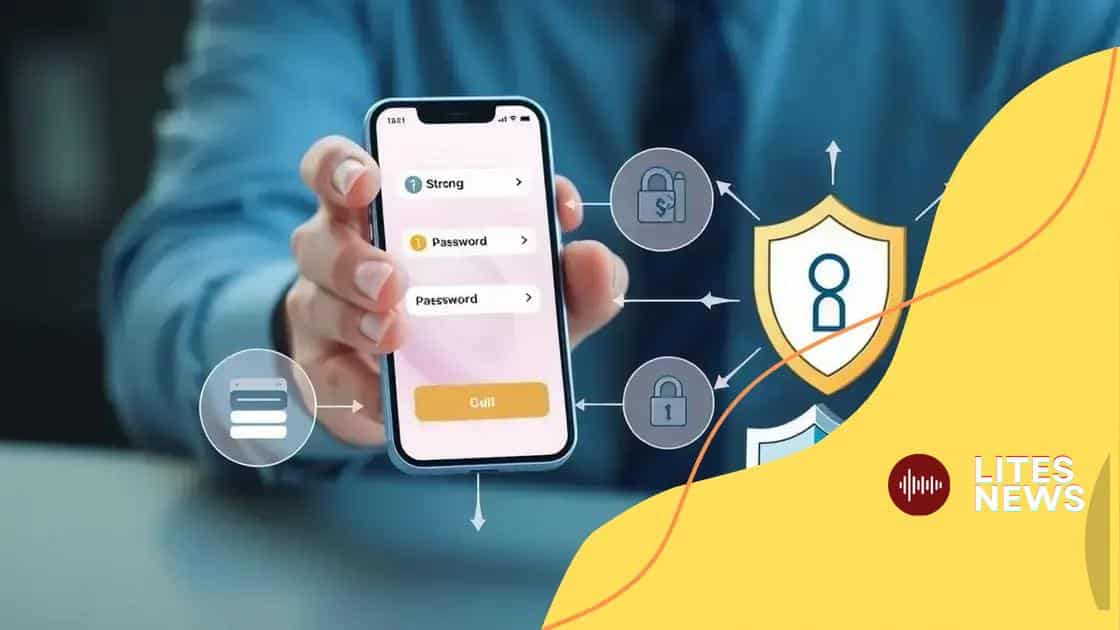Digital wallet security advancements to boost your protection

Digital wallet security advancements include biometric authentication, AI integration, and blockchain technology, which enhance protection against fraud and unauthorized access.
Digital wallet security advancements are crucial in today’s tech-driven world. With more transactions happening online, how can you ensure your finances stay safe? Let’s dive into the latest developments that offer better protection.
Understanding digital wallet security threats
Digital wallets are increasingly popular, but they come with their own set of risks. Understanding digital wallet security threats is essential for anyone who uses these platforms. From unauthorized transactions to phishing scams, knowing the dangers helps you protect your financial information.
One major threat is the use of malware. This malicious software can infiltrate your device, capturing sensitive information without your knowledge. Users should always ensure that their devices have updated antivirus software to combat this risk.
Phishing Scams
Another significant threat involves phishing scams. These scams often result from fake emails or websites that impersonate legitimate services. A common tactic is to send a message claiming your wallet account has a problem, urging you to provide your login details.
- Always verify the sender’s email address before clicking links.
- Look for signs of phishing, such as poor grammar and suspicious URLs.
- Enable two-factor authentication on your wallet for added protection.
Furthermore, public Wi-Fi networks pose another risk. When you access your digital wallet on an unsecured Wi-Fi connection, hackers can intercept your data. Avoid logging into your wallet or making transactions on public networks whenever possible.
Weak Passwords
Using weak passwords is a common vulnerability that can lead to unauthorized access. A strong, unique password that combines letters, numbers, and symbols is vital.
- Avoid using easily guessable information like birthdays.
- Consider using a password manager to generate and store complex passwords.
- Regularly update your passwords to enhance security.
In conclusion, being aware of the digital wallet security threats you face is the first step in protecting yourself. By implementing strong security measures and staying informed, you can significantly reduce your risk of falling victim to these threats.
Latest technologies enhancing wallet security
As digital wallets gain popularity, latest technologies enhancing wallet security are vital to protect users. These technologies help secure transactions, making it harder for hackers to infiltrate.
One key technology is blockchain. By using decentralized networks, blockchain provides transparency and security. All transactions are recorded securely, which makes it incredibly difficult for unauthorized changes to occur.
Biometric Authentication
Another exciting advancement is biometric authentication. This technology uses unique physical traits, such as fingerprints or facial recognition, to ensure that only the authorized user can access their wallet. It acts as a strong barrier against unauthorized access, making it more secure than traditional passwords.
- Fingerprints are quick and unique to each individual.
- Facial recognition technology continually improves and adapts to various lighting conditions.
- Some wallets even offer voice recognition features.
Furthermore, encryption plays a major role in securing digital wallets. Advanced encryption techniques protect sensitive information during transactions. This technology scrambles data so that even if intercepted, it remains unreadable.
Artificial Intelligence
Finally, the role of artificial intelligence cannot be overlooked. AI systems monitor transactions for suspicious activity. If something unusual is detected, the system can alert the user and even block the transaction.
- AI learns from user behavior, improving security measures over time.
- It provides real-time analysis, making it easier to spot trends and anomalies.
- Users are often notified immediately about suspicious activities.
These latest technologies are transforming how we think about digital wallet security. By implementing such advancements, users can feel more confident that their financial information is safe and secure.
Best practices for securing your digital wallet

Securing your digital wallet is crucial in today’s world. Following the best practices for securing your digital wallet can help protect your information from theft and fraud. Simple yet effective steps exist to enhance your wallet’s safety.
One essential practice is to use strong passwords. A password should include a mix of letters, numbers, and symbols. Avoid using personal information like your name or birthday. It makes passwords much easier to guess.
Enable Two-Factor Authentication
Another effective measure is enabling two-factor authentication (2FA). This adds an extra layer of security by requiring a second form of verification in addition to your password. It could be a code sent to your mobile device or an authentication app.
- Choose a reliable 2FA method that works best for you.
- Keep your phone secure, as it’s often the second method of verification.
- Regularly check your account settings to ensure 2FA is active.
Furthermore, ensure your device is secure. Always keep your operating system and apps updated. Updates often include security patches that address new vulnerabilities. Regularly checking for software updates is a good habit that can prevent security breaches.
Beware of Phishing Scams
Stay informed about phishing scams too. These scams can trick you into giving away your credentials. Always verify the source of emails or messages related to your wallet. Look out for unusual links or poor grammar.
- Do not click on suspicious links.
- Always navigate to your wallet by typing the address in your browser.
- Set alerts for any unusual activity on your account.
Overall, adhering to these best practices can significantly enhance the security of your digital wallet. By using strong passwords, enabling two-factor authentication, keeping your device updated, and being vigilant about phishing attempts, you can protect yourself from many common threats.
The role of biometric authentication
The role of biometric authentication is increasingly important in securing digital wallets. This technology uses unique physical traits to verify a user’s identity, making it much harder for unauthorized individuals to gain access.
One common type of biometric authentication is fingerprint scanning. Most smartphones now include fingerprint sensors, allowing users to unlock their devices and authorize transactions quickly. This method is convenient and adds a strong layer of security.
Facial Recognition
Another widely used form is facial recognition. This technology analyzes your facial features to ensure that you are indeed the account owner. It’s becoming a popular choice for many digital wallets due to its speed and efficiency.
- Facial recognition can work even in low light settings.
- It continuously updates its data to recognize you better over time.
- This method is less intrusive and user-friendly.
Moreover, biometric authentication is not only secure but also user-friendly. Traditional passwords can be complicated and often lead to forgotten credentials. In contrast, biometric methods eliminate this issue since your identity is tied to something you inherently possess.
Security Advantages
Biometric authentication offers several security advantages. It significantly reduces the risk of unauthorized access, as these traits are unique to each individual. Additionally, with the advancement of technology, biometric systems are becoming increasingly accurate.
- The risk of identity theft is lower with biometrics.
- It provides quick access, making it convenient for users.
- Many systems integrate two or more biometric methods for enhanced security.
In summary, the role of biometric authentication in digital wallets cannot be overstated. It enhances security, convenience, and user experience. By employing these advanced methods, users can protect their financial information more effectively while enjoying hassle-free access to their digital wallets.
Future trends in digital wallet security
Future trends in digital wallet security are expected to shape how we protect our financial information. As technology evolves, so do the methods used by cybercriminals. Staying ahead of these trends is essential for safeguarding your digital assets.
One significant trend is the rise of artificial intelligence (AI) in security measures. AI can analyze behavior patterns and identify anomalies much faster than humans. This technology learns from each transaction, improving its ability to detect fraud.
Enhanced Biometric Technologies
Another trend involves enhanced biometric technologies. As facial recognition and fingerprint scanning become more common, they are also becoming more secure. Future systems may use advanced features like vein recognition or even iris scanning. These methods are harder to replicate, making them safer options for authentication.
- Vein recognition scans the unique patterns in a person’s palm or finger.
- Iris scanning examines the unique patterns in the colored part of the eye.
- These methods combine convenience and security for users.
Moreover, the integration of blockchain technology is another exciting trend. Blockchain can offer a secure and transparent way to record transactions. As more wallets adopt this technology, it could make fraudulent activity much more challenging for hackers.
Decentralized Identity Management
Another area to watch is decentralized identity management. With more control over personal data, users can manage their identities without relying on centralized databases. This reduces the risk of massive data breaches that often expose personal information.
- Users have the power to decide what data to share.
- This method increases privacy and minimizes risks.
- Decentralized systems are harder for hackers to infiltrate.
In conclusion, the future of digital wallet security looks promising with advanced technologies on the horizon. By adopting AI, enhanced biometrics, blockchain, and decentralized identity management, users can expect a more secure experience while using their digital wallets.
In summary, understanding the advancements in digital wallet security is essential for anyone managing their finances online. From biometric technologies to AI, the future holds many exciting developments. By staying informed and adopting best practices, users can significantly enhance their security. With these tools and technologies, protecting sensitive information has never been easier. Embracing these changes ensures that your digital wallet remains secure and efficient.
FAQ – Frequently Asked Questions about Digital Wallet Security
What is biometric authentication?
Biometric authentication uses unique physical traits like fingerprints and facial recognition to verify a user’s identity and enhance security.
How does AI improve digital wallet security?
AI analyzes user behavior and detects unusual patterns in real-time, helping to identify and prevent fraud effectively.
What role does blockchain play in digital wallets?
Blockchain technology provides a secure and transparent way to track transactions, making it difficult for fraudsters to alter data.
Why is decentralization important for security?
Decentralization gives users greater control over their personal data, reducing the risk of massive data breaches that typically target centralized databases.





